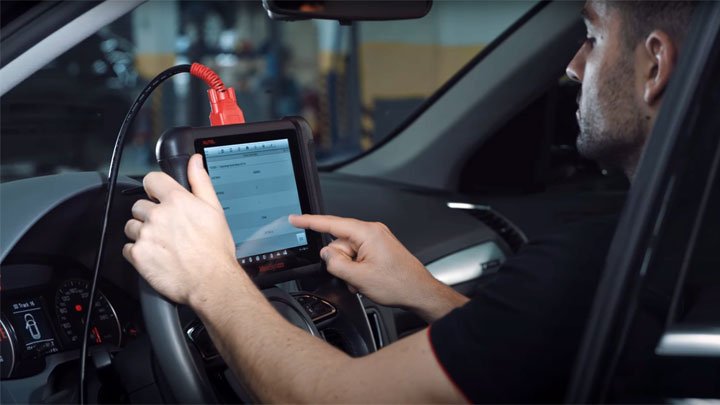The Top 5 Reasons Why People Are Successful In The Broken Key Repair Industry

Broken Key Repair: Solutions for Common Lock Issues
Introduction
Keys are essential tools in our every day lives, allowing us to secure our homes, cars, and individual belongings. However, they can also break, resulting in frustrations and hassles. Understanding how to attend to broken key issues is essential for anyone wanting to preserve their locks and make sure access to their residential or commercial property. This short article covers various elements of broken key repair, including typical causes, repair techniques, and preventive procedures to avoid future circumstances.
Typical Causes of Broken Keys
Keys can break for numerous reasons. Understanding these causes can help in preventing future incidents:
- Wear and Tear: Over time, keys can wear down due to frequent usage, resulting in weakened shafts that are most likely to break.
- Poor Key Design: Keys that are badly developed may lack structural integrity, making them more vulnerable to breaking under stress.
- Inaccurate Key Usage: Using extreme force to turn a key, especially in a jammed lock, can easily lead to a breakage.
- Ecological Factors: Extreme temperature levels or direct exposure to moisture can deteriorate metal keys, resulting in brittleness.
- Lock Malfunctions: A malfunctioning lock can position excessive tension on a key, triggering it to snap throughout operation.
Indications of a Broken Key
Identifying a broken key often includes obvious signs. Here are some signs:
- Partial insertion into the lock: If the key can not be completely inserted or eliminated.
- Abrupt resistance: If the key feels stuck when being turned.
- Noticeable divides or fractures: Inspecting the key can reveal fractures or breaks in the metal.
- Insufficient engagement: The key might turn less than needed to activate the lock.
Techniques for Broken Key Repair
When faced with a broken key, there are a number of methods to think about for repair. It is vital to choose the ideal one based upon your particular situation.
1. Remove the Broken Key
If a key breaks within a lock, the first action is to get rid of the broken portion:
- Use tweezers or needle-nose pliers: If a piece is sticking out of the lock, gently pull it out.
- Place a key extractor tool: This specialized tool can help extract lodged parts better.
| Tool | Best Used For |
|---|---|
| Tweezers | Shallow extraction |
| Key extractor tool | Deeply lodged key pieces |
| Lube spray | Easing extraction of stuck parts |
2. Superglue Method
For situations where a key has actually partly broken however is intact enough to remain gripped, the superglue method might provide a short-lived fix.
- Tidy the broken surface areas completely.
- Apply a thin layer of superglue.
- Hold the pieces together for a couple of minutes up until the glue sets.
Note: This approach is not an irreversible solution and needs to be used with care as the repair can quickly stop working under functional tension.
3. Metal Epoxy
For a more robust repair, metal epoxy supplies a stronger bond than superglue.
- Follow the directions on the epoxy product packaging for preparing the adhesive.
- Apply to the broken location and hold till set (usually a few hours).
4. Duplicate the Key
In instances where lock functionality is essential, developing a duplicate key is often the finest route:
- Visit a locksmith: Many locksmiths can reproduce keys rapidly and efficiently.
- Use a key-tracing service: Some locksmiths utilize tracing techniques to cut a similar key based on the residues.
5. Lock Replacement
When keys repeatedly break, it might be due to lock concerns rather than key stability. In such cases:
- Consult a locksmith to assess the lock's condition.
- Consider changing the lock completely if substantial damage or wear appears.
Preventing Key Breakage
Preventing key breakage is frequently better than repair. Here are some useful pointers:
- Limit force on keys: Always turn keys gently to prevent unnecessary stress.
- Routine key evaluation: Check for wear and change keys showing signs of damage.
- Utilize a keychain: Prevent extreme flexing by using a tough keychain.
- Oil locks: Ensure locks run smoothly to lower pressure on keys.
- Shop keys appropriately: Avoid putting type in environments that can trigger rust or rust.
Frequently Asked Questions About Broken Key Repair
1. Can I repair a broken key myself?
Yes, you can try to repair a broken key yourself utilizing approaches like the superglue or metal epoxy techniques. However, these are short-term repairs, and it is a good idea to seek advice from an expert locksmith for a more long lasting service.
2. Is it worth fixing a broken key?
In some cases, particularly with nostalgic or distinct keys, a repair may be worth it. For had me going , replication or replacement is normally more efficient and reliable.
3. How can I avoid my keys from breaking?
To prevent damage, guarantee that keys are not subjected to excessive force, frequently examine them for wear, and keep locks properly maintained.
4. When should I look for a locksmith's assistance?
If you are unable to get rid of a broken key from a lock or if the lock malfunctions regularly, it's finest to look for a locksmith's competence.
Broken keys can present a substantial hassle, however they are manageable with the ideal approach. By comprehending the common causes and available repair approaches, individuals can respond successfully to key breakage. Drawing from preventive measures will likewise assist preserve key stability and performance. Ultimately, a proactive method to key and lock maintenance can considerably reduce the frequency of these frustrating concerns.

